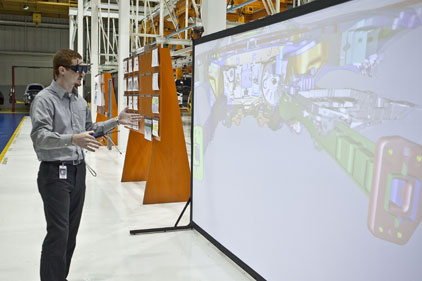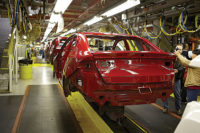“When we introduced the all-new Dodge Dart compact sedan, we were faced with an integration challenge,” says Kurt Kavajecz, plant manager. “Because the Dart differs significantly from the two vehicles previously built in Belvidere—the Jeep Compass and Jeep Patriot—[we] had to make a number of changes in the build process to accommodate the new vehicle architecture. The solution was the control room process.”
The 38,000-square-foot control room was used by teams of engineers and operators to determine the most efficient way to assemble the Dart. Engineers borrowed the idea from Fiat’s Pomigliano plant, which is located near Naples, Italy.
“The control room allows us to set clear goals for operators and provide standard processes for best practices,” says Bob Allen, Dodge Dart launch manager. “So far, assembly teams have worked on 28 major processes and more than 600 production issues have been identified.”
More than 4,000 kaizens were conducted before production even began. For instance, on the door line, team members reduced 5,400 walking steps per day, which translates into savings of almost $40,000 per year.
The Dodge Dart compact sedan is assembled on the same line as the Jeep Compass and Jeep Patriot sport utility vehicles. “Assembling the Dart requires operators to use many new parts and tools,” says Allen. “There’s a 42-second takt time between the Dart and the Jeeps.”
Allen and his colleagues addressed flexibility issues by using three separate conveyors in the control room to simulate the door line, the chassis line and the trim line. Also, all workstations on the plant floor were equipped with visual standard operating procedures, which feature more pictures and less writing than previously used in the Belvidere plant.
The control room relies on state-of-the-art 3D simulation technology to train assemblers. A large screen and virtual reality tools allow operators to move parts within the Dart to determine the tools and processes they need to operate more productively. It ensures that components and tools are ergonomically compatible, while also allowing engineers to determine the correct installation sequence.
More traditional boards are scattered throughout the control room and are covered with charts, graphs and other visuals. Engineers and operators use the data to track key performance indicators, such as cost, delivery, quality and safety.



